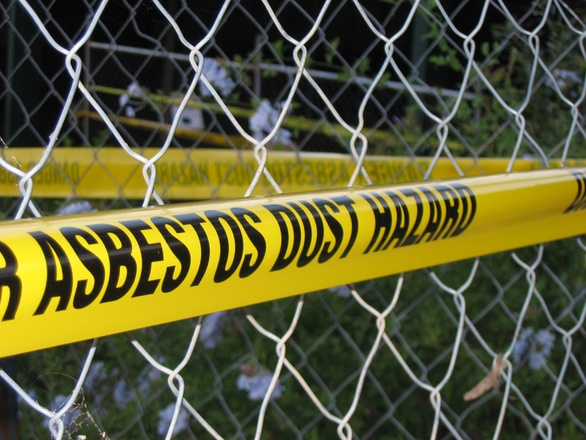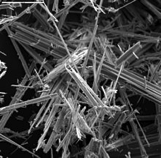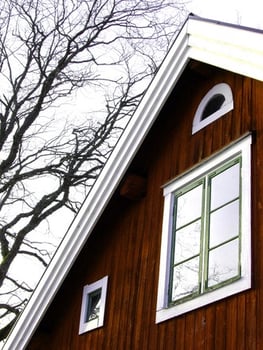Your insureds are scared of asbestos in their building! Who can blame them. Asbestos in homes and businesses should be no surprise to construction professionals.

Warnings regarding the dangerous nature of asbestos have been around since the 1960s.
As all construction professionals know, asbestos exposure is something that always needs to be taken seriously. According to OSHA, "there is no 'safe' level of asbestos exposure for any type of asbestos fiber. Asbestos exposures as short in duration as a few days have caused mesothelioma in humans. Every occupational or incidental exposure to asbestos can cause injury or disease and contributes to the risk of getting an asbestos related disease."
So what is asbestos?
Asbestos is a naturally occurring substance in metamorphic rocks. In the US, large deposits of asbestos are located in the western United States, North Carolina, South Carolina, and Tennessee. All types of asbestos fibers are known to cause serious health hazards in humans. Amosite and crocidolite are considered the most hazardous asbestos fiber types; however, chrysotile asbestos has also produced tumors in animals and is a recognized cause of asbestosis and malignant mesothelioma in humans, and mesothelioma has been observed in people who were occupationally exposed to chrysotile, family members of the occupationally exposed, and residents who lived close to asbestos factories and mines.
Exposure to asbestos in the form of fibers is always considered dangerous. Working with, or exposure to, material that is friable, or airborne, or materials or works that could cause release of loose asbestos fibers, is considered high risk.
Photo Credit: Burns Environmental Services

When is asbestos dangerous?
Asbestos exposure becomes an issue if asbestos containing materials become airborne, such as due to deterioration or damage. Building occupants may be exposed to asbestos, but those most at risk are persons who disturb building materials, such as maintenance or construction workers. Housekeeping or custodial employees may be at an increased risk as they may potentially clean up damaged or deteriorated asbestos containing materials without knowing that the material contains asbestos. Asbestos abatement or remediation workers and emergency personnel such as firefighters may also become exposed.
Although the dangers of asbestos have been known for decades, it still can be found in existing buildings and building materials.
According to EPA.gov, the federal government has never fully banned asbestos in products. Fortunately, the use of asbestos has been diminishing over time; therefore, it is unlikely to find asbestos in current building products. However, asbestos has been contained in many building products prior to the 1970s and continued, in diminishing amounts, ever since.
Paying for the cost of removing asbestos containing material in a building is generally borne by the owner. Some contractors have environmental coverage in their insurance policies so that if they disturb asbestos during their work, the insurance company may pay for the often expensive cleanup of the disturbed asbestos. Architects, Engineers, and Contractors should be aware that any existing building can include asbestos containing materials, especially if these buildings are older.
Consider the scenario of a contractor removing a small area of old asbestos containing flooring which inadvertently results in airborne asbestos contamination throughout a residence. In this scenario, the residents would be required to move out of the house during the clean-up operation due to the hazard caused by airborne asbestos. If the contractor had an environmental contamination insurance policy in effect at the time of the incident, a claim could bemade for damages. The insurance company’s experts, like CCA, would investigate the matter and make arrangements to pay for abatement and repair of the damaged property. The policy would likely not pay to remove undisturbed asbestos containing materials.
Old Buildings and Homes
 Today, many areas within the USA are filled with beautiful, older post-war homes on tree-lined streets with large yards, backyard swimming pools, and curved driveways. These buildings are in demand as they offer much more living space, character, and potential for renovation compared to the cookie-cutter tract homes and condos mass-produced in subdivisions throughout the country.
Today, many areas within the USA are filled with beautiful, older post-war homes on tree-lined streets with large yards, backyard swimming pools, and curved driveways. These buildings are in demand as they offer much more living space, character, and potential for renovation compared to the cookie-cutter tract homes and condos mass-produced in subdivisions throughout the country.
These beautiful, older buildings, which can be found in many of America's larger urban areas, are desirable, well built, expensive - and potentially dangerous, as many have a potentially dangerous and illusive problem: asbestos containing materials.
The use of asbestos became increasingly widespread in the construction industry towards the end of the 19th century.
Its diverse applications included fire retardant coatings, concrete, bricks, pipes and fireplace cement, heat, fire, and acid resistant gaskets, pipe insulation, ceiling insulation, fireproof drywall, flooring, roofing, joint compound, drywall, popcorn ceilings, caulking, interior fire doors, pipe insulation, roofing shingles, shingles, HVAC duct insulation, sheet vinyl flooring (linoleum), and vinyl tile flooring. Well after the determination that asbestos was a dangerous material, asbestos still found its way into building products made from mined materials.
In the process of renovating old buildings, old finish materials are often removed and replaced, holes are cut in walls and floors, and wholesale demolition can be the order of the day. If the contractor or homeowner encounters asbestos and disturbs the material, fibers may become airborne and spread throughout the house resulting in a contaminated environment requiring clean-up.
Such clean-up needs to be in compliance with local, state, and federal regulations such as those by OSHA and EPA. The process may involve the displacement of the residents, enclosure and containment of parts of the house, removal and disposal of contaminated articles, clean-up of the property and clearance testing to assure the elimination of asbestos in the air and on surfaces.
Stay tuned for our next post, which will detail the steps needed for testing and necessary clean-up once asbestos is discovered.


